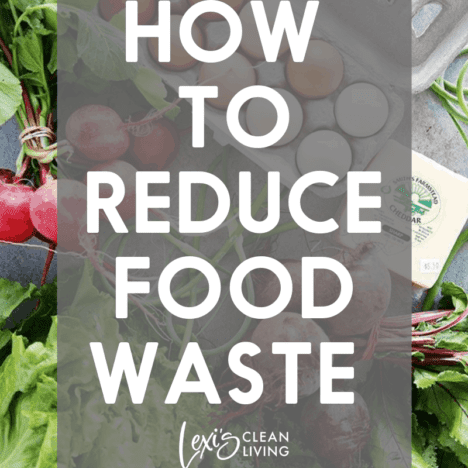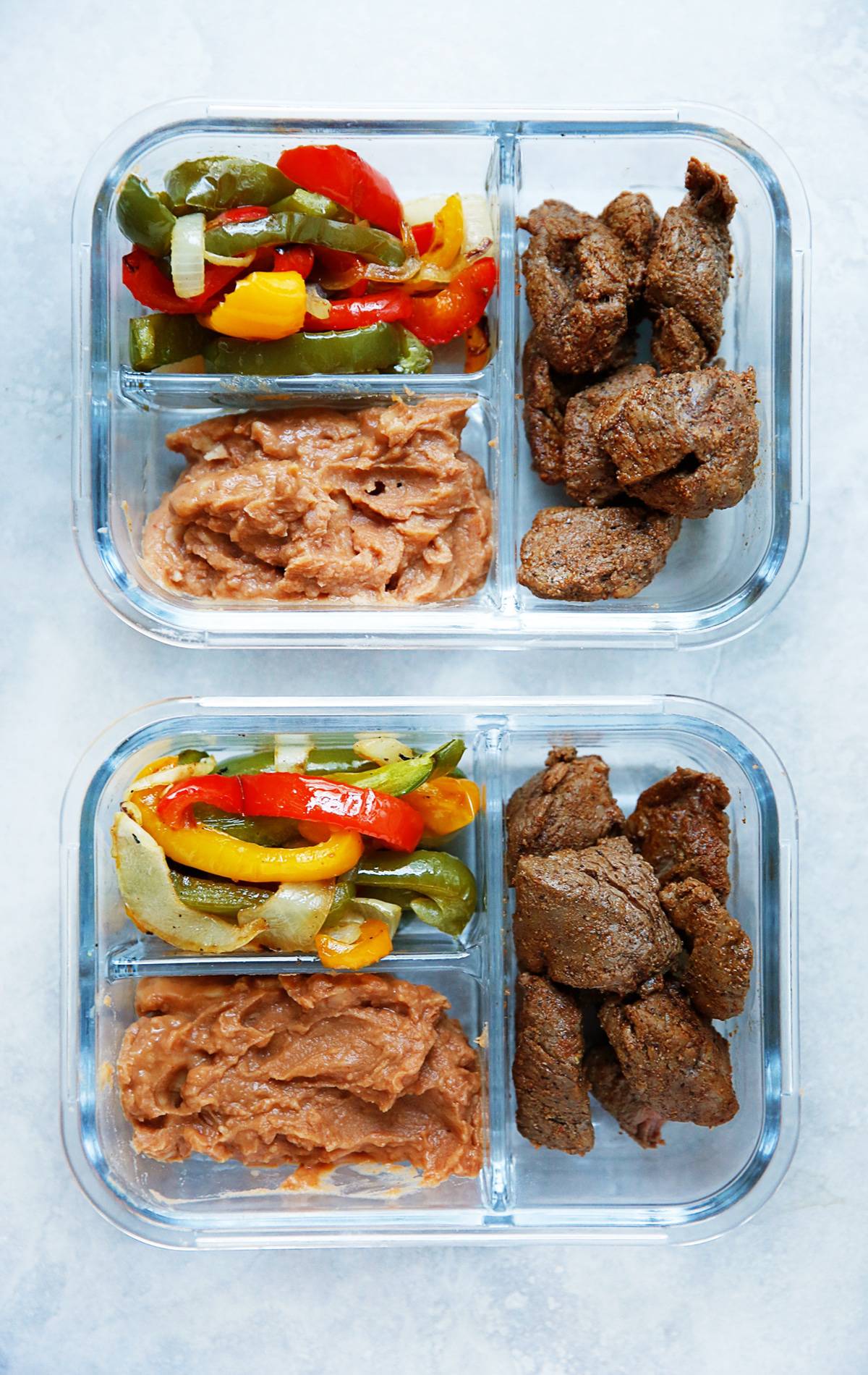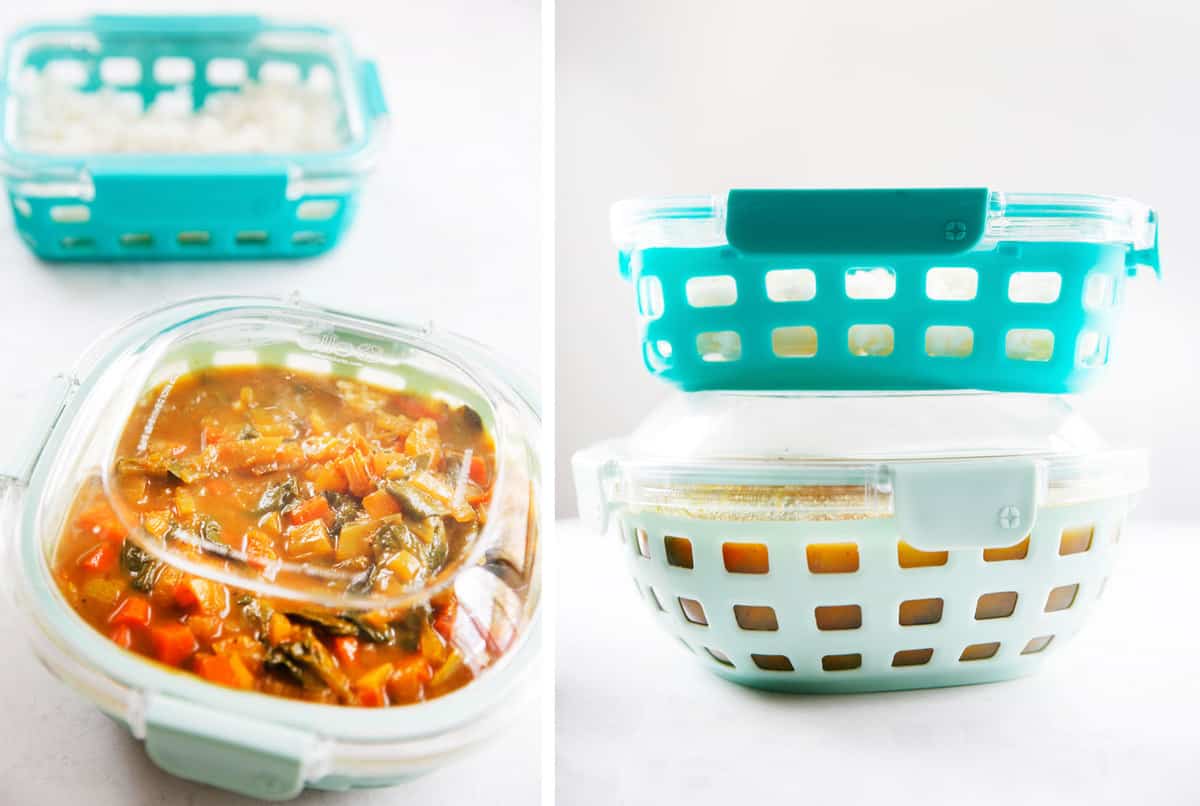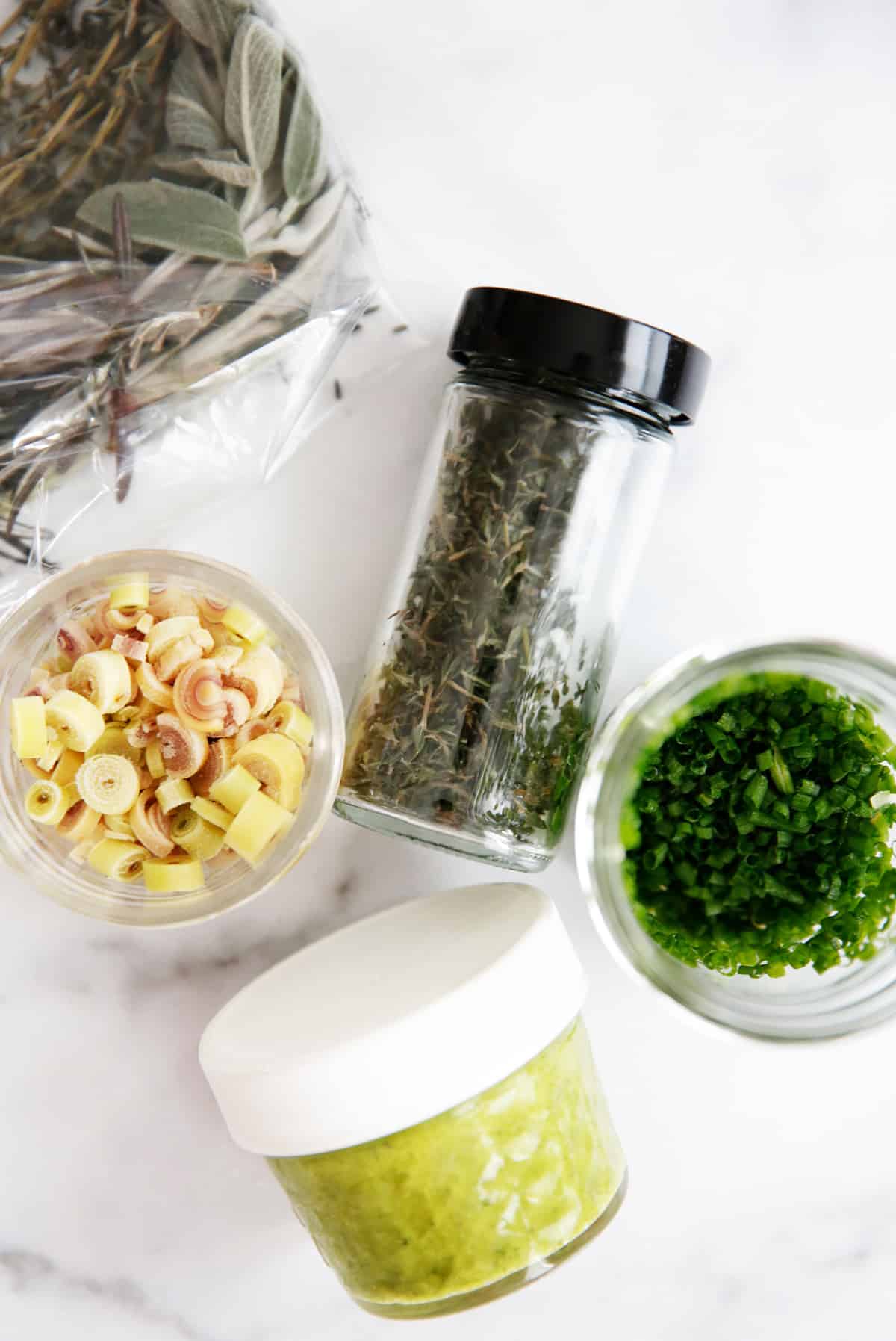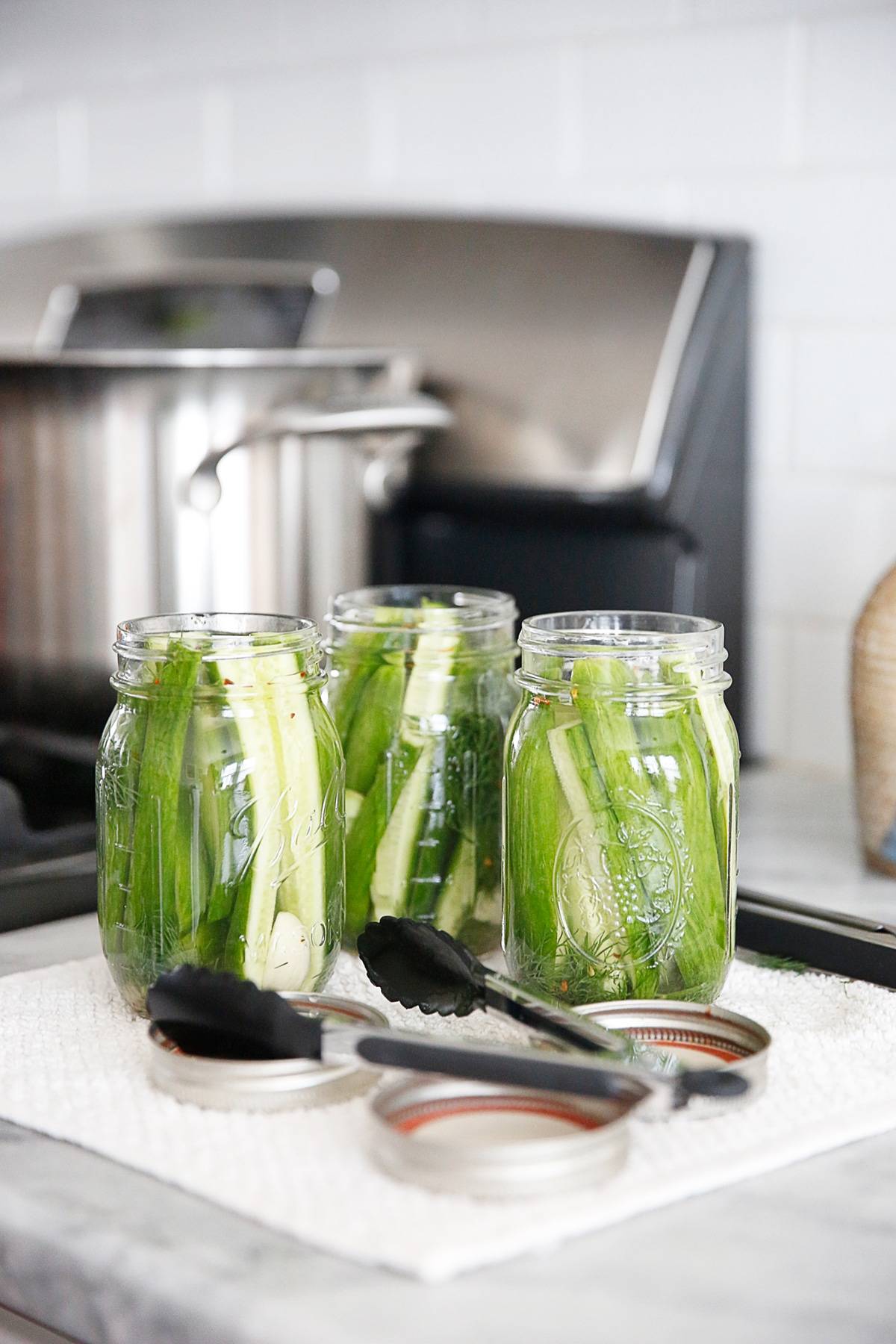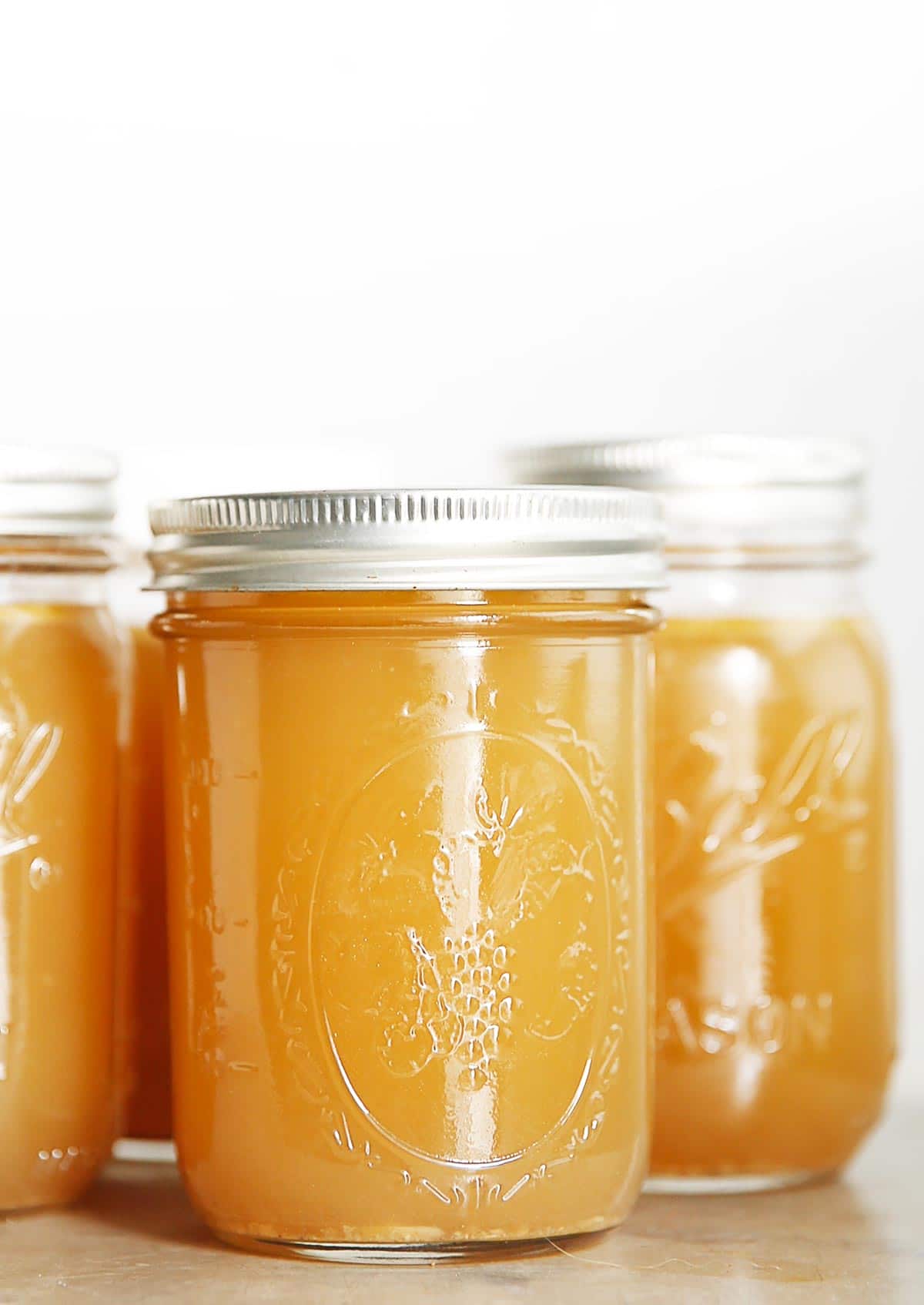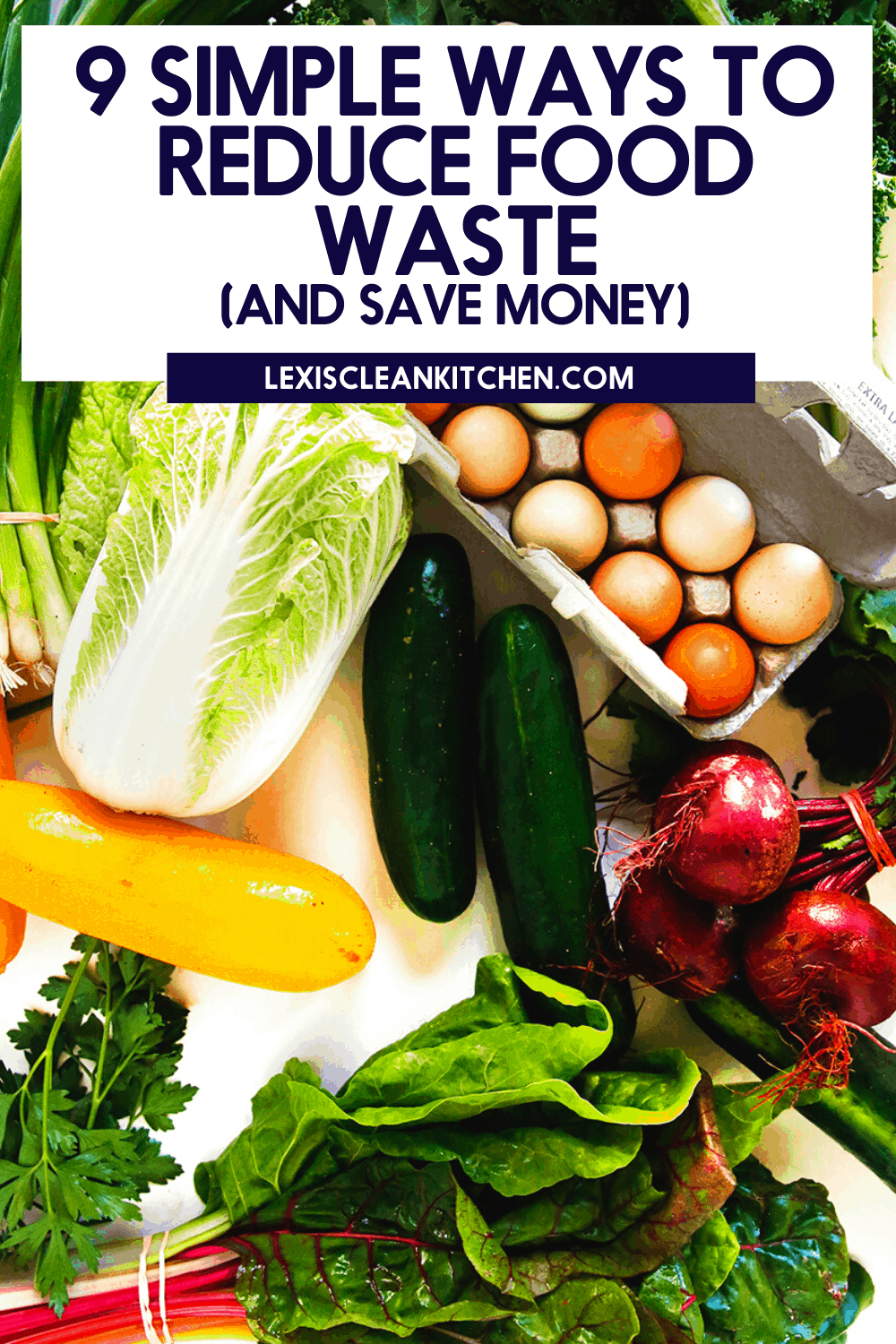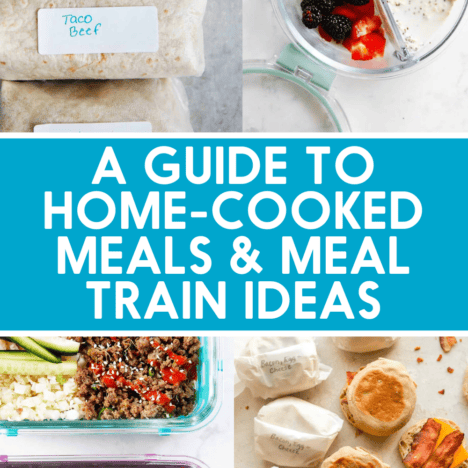This post may contain affiliate links. Please read my disclosure policy.
Food waste is a widespread problem, and now more than ever, we are all looking for ways to reduce that percentage. The good news is that part of the solution starts at home, in your own kitchen. We are sharing some easy and concrete ways you and your family can reduce food waste!
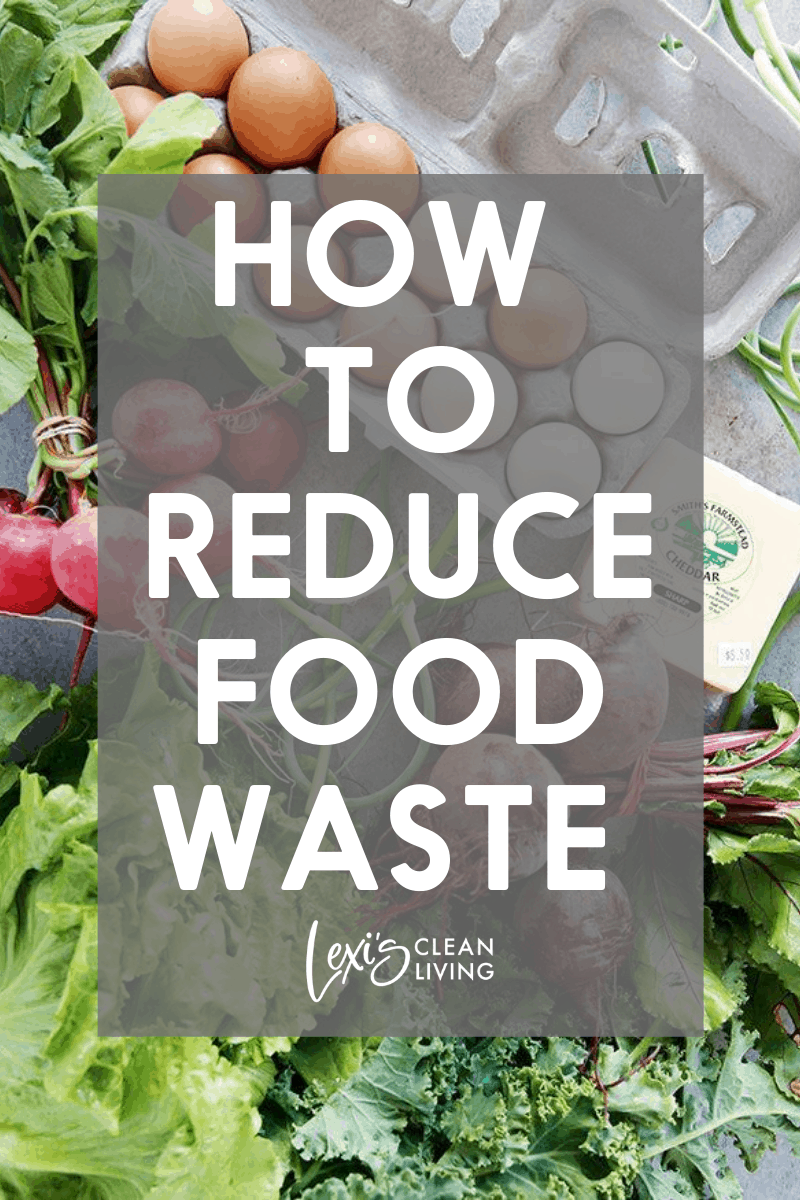
How to Reduce Food Waste
I don’t know about you, but I hate to see food go to waste.
There are so many reasons that food waste is a bummer. It’s the equivalent of losing money. It makes you feel like you’re taking food resources away from other people who need them and could put the food you wasted to good use. It’s also rough on the environment. According to Move for Hunger, food waste requires energy and natural resources for processing, transporting, and storage. These processes cause greenhouse emissions, which contribute to pollution, respiratory disease, wildfires, and extreme weather. Food waste also causes landfills to build up.
So, yeah, I really hate to see food go to waste.
While it’s clear to me that food waste isn’t something we should be taking lightly, I will let you know that if you feel like you waste a lot of food, you’re not alone. Per the USDA, food waste in the United States is estimated between 30 and 40 percent of the total food supply. How crazy is that?
Food waste is a widespread problem, but we can all do our part to reduce that percentage. It all starts at home, in your own kitchen. Here are a few practical things you can do to reduce food waste…
Plan your meals.
This is hardly the first time you’ve heard me talk about meal planning. In fact, we offer a whole bunch of awesome meal plans right here on the site! Sitting down to plan out your meals for the week on a regular basis is a great way to minimize excess supermarket trips and ensure that you’re feeding your family delicious and healthy meals.
Getting into a meal planning habit is also great for minimizing food waste! I recommend sitting down once a week to make a meal list for each day of the week ahead. The trick to using this method to effectively cut down on waste is to be realistic. Are you really going to be up for cooking elaborate dinners every night? Are you more likely to use leftovers for lunch some days than you are to make a meal from scratch? Will your family likely order take-out one or two nights? Do you want to leave room to be spontaneous for some meals?
Asking yourself these questions — and answering them honestly! — will probably simplify your meal plan. This means that your grocery list will also get a lot shorter… and a shorter grocery list means that you’re less likely to waste food. We’ve all found ourselves tossing fresh ingredients for a meal that we had planned to make but never got around to. Making an honest, realistic meal plan will make this happen less.
And speaking of shopping lists, make one and stick to it! Only buy what you have planned out for the week is a very simple way to reduce food waste. Plus it helps out our budget, as well!
Be intentional about serving sizes.
Realistic serving sizes should play into your honest meal planning. I figured this deserved a special shoutout, since it’s something so many people struggle with!
All too often, people overestimate how large serving sizes should be. I get that you don’t want to leave your family without second helpings when they want them, but sometimes, we can go overboard. I challenge you to start paying more attention to what happens at the end of meals in your home. Are you consistently packing up leftover helpings (more on leftovers later!) or throwing out extra food? If so, it might be time to adjust the way you shop.
Some of the other suggestions on this list will help you store food overage more effectively and less wastefully, so if you do find yourself with extra food, you’ll know what to do with it. Still, if you’re missing the mark on serving sizes regularly, it wouldn’t hurt to take this into account when you’re meal planning. It can also help save you money in the short-term!
Store food correctly.
One of the most common reasons that people get rid of — AKA waste — food is because it’s gone bad. If you open up your fridge or cabinet and see that something has spoiled, you might just assume it’s the food’s fault and that there’s no other solution than to trash it. It’s true that there’s not much you can do with food once it’s gone bad, but you can get ahead of the problem. By storing food properly from the beginning, you’ll make it last and stay appetizing longer. As a result, it’s less likely to go to waste!
From there, leftovers need to be handled correctly. Here are some key rules of thumb to keep in mind, according to the USDA:
- Don’t leave food at room temperature for too long. Keeping food at the correct temperature is very important, since it slows the growth of bacteria. The danger zone for bacterial growth for food is the range of temperatures between 40°F and 140°F, which can allow bacteria growth to double in as little as 20 minutes, according to the USDA. Perishable foods should not be left at room temperature for more than two hours (or one hour, if the temperature is 90ºF or higher).
- Don’t cover your leftovers when they’re still hot. When covered, hot foods don’t have the chance to cool down as quickly, and that will make them hang out in that “danger zone” for a longer period of time. Wait to cover hot foods until they’ve already cooled a bit. For a good rule of thumb, observe “the steam rule.” If you’ve covered your food and the container starts to steam inside, that means it is still too hot to be covered.
- Cool foods quickly before getting them in the refrigerator. You can speed up the natural cooling process by storing your leftovers in shallow containers (more on containers below!) or cutting them into smaller pieces. The less time you allow a dish to sit on the counter cooling, the less time it has to grow bacteria. Foods should be just barely warm before being moved to the fridge.
- Wrap your leftovers well. Leftovers are less likely to attract bacteria when they’re airtight in the refrigerator! Go for airtight packaging or sealed containers whenever possible.
Here are some of my favorite reusable food storage containers and products:
- Ello DuraGlass Glass Food Storage Containers
- Pyrex Glass Storage Containers
- Glass Bento Box Containers
- Stasher Bags
- Mason Jars
Use your leftovers.
More often than not, before food turns into food waste, it can make perfectly good leftovers! I recently wrote a post with everything you need to know about leftovers, but here are a few key things to keep in mind if you want to start eating more leftovers to combat food waste:
- Rice, braised meat, and roasted veggies make for especially good “intentional” leftovers! If you start working leftovers into your meal planning strategy, you can get creative with repurposing those items from one meal to the next and save on cooking time, too!
- Lots of other foods make great accidental leftovers, so you can put them away to eat later on even if you didn’t plan for it. Soup, baked pasta dishes, chili, and casseroles all fall into this category.
- Sticking to safe food prep and storage guidelines will keep leftovers fresh and usable longer.
- Leftovers can generally be kept in the refrigerator for up to four days or in the freezer for three to four months before they become “unsafe” to eat.
Learning to make the most of your leftover food really has the potential to cut down on how much food you waste. Plus, you’ll get more mileage out of meals that you and your family love, anyway.
Intentional Leftovers
One intentional way to use up leftover food is to think about it when meal planning (see above). Make one night leftover night. On this night, dinner will consist of any leftovers in the refrigerator. It may not be pretty or gourmet, but getting into this habit is a great way to reduce food waste. If you don’t have any actual leftovers or pieces of leftovers that you can craft together to make a meal, you can go diving in the pantry to create one! It can be a fun way to make a meal out of stuff you already have in your home that maybe wasn’t on your radar to eat. Plus, it ensures you go through some of the goods sitting in your pantry you may have forgotten about.
Keep your fridge organized.
Another common reason that food is wasted is that it’s just forgotten! If your fridge is crowded and you’re constantly adding new stock to it without using what’s in the back first, perfectly good ingredients will just sit there until they’re not perfectly good anymore. You can correct this problem by putting newer groceries in the back of the refrigerator and rotating older items to the front. This is known as “first in, first out”.
The same is true for leftovers! If you are continually adding leftover meals to your refrigerator, you should constantly rotate them. Make sure that the most recently added food goes to the back or bottom of your refrigerator to ensure you are using the older food first. You’ll be less likely to lose food this way!
Basic organization will go a long way, too! Keeping the refrigerator clear of clutter will ensure that you can see everything that’s available to you. Hopefully, you’ll use it before it gets to the point of needing to be tossed.
Make good use of the freezer!
Yes, the freezer is one place to safely store leftovers (plus tons of yummy freezer meals), but that’s not the only way you can use it to minimize waste.
It’s so simple to utilize the freezer to store items long-term that you know you won’t use up right away — especially when these food items are really easy to defrost when you’re ready to cook or eat. Here are some foods you can store in the freezer instead of the refrigerator:
- bread
- meat
- cheese (yes, I said cheese!)
- butter
- broth (especially the homemade kind)
- nuts and seeds (they can go rancid easily at room temperature)
- flours (same as nuts, they can spoil quickly)
- fresh herbs (see this Guide to Storing Herbs for more information)
- cooked grains (such as rice, quinoa, or lentils)
- ripe fruit, such as bananas
How to Defrost
The best and safest way to defrost meat is slowly overnight or for a few days in the refrigerator. Don’t forget to place it in a bowl to catch any accidental drips from the meat. If you don’t have a few days to defrost meat, you can place it in a bowl with room temperature water for 30 minutes. Also, check out this post for Cooking Frozen Chicken Breasts in the Instant Pot.
Frozen bread will thaw pretty quickly at room temperature. It typically takes less than 30 minutes! Alternatively, you can thaw frozen bread on a plate and microwave it on high for 15 to 25 seconds. You can take out slices and quickly defrost them as you need to without wasting a whole loaf of bread.
Cheese can be slowly defrosted in the refrigerator. In some cases, you can even use the cheese frozen if you are planning to cook it (think pizza!).
Cooked grains can be left frozen until ready to use, since they’ll most likely be heated again (if you’re adding them to a soup, making fried rice, etc.).
Anything else stored in the freezer can easily be taken out as needed and stored in the refrigerator until defrosted.
Find ways to preserve food.
If you’re open to a little bit more of a project, turning fresh food into jams or preserves or pickling it saves it from being wasted and gives it a brand new delicious life.
Food canning can seem daunting since there’s a little science that happens, but it is actually easy and can be great for those who have a garden or an abundance of food to use up (especially in the summer). You can preserve and store the food for winter when things aren’t as in season! When you properly can foods, the container will be airtight to prevent spoilage (you want that pop at the end!). Depending on the type of food, you can keep it stored for different periods of time, but typically about a year.
Canning is simply the process of preserving food in jars to become shelf-stable. To do this, you need to use clean and intact jars and submerge them in a boiling water bath for a specified period of time. This process eliminates any oxygen from the jars, making the food shelf-stable. This lack of oxygen could create a dangerous environment for the growth of a bacteria called botulism. The good news is that this is super rare and can be prevented by following a few basic safety rules. One of the most important aspects of canning is to make sure that your food has a high level of acid. If the food isn’t naturally high in acid — cucumbers, for example — you need to create a pickle liquid that is high in acid (like one that is made up of vinegar) to ensure that nothing dangerous can grow in your processed jars. Here are some tips to help you safely process your pickles:
- Follow the recipe.Whether it’s our recipe or a recipe from another reputable source, follow it to assure you are using the correct amount of vinegar to water.
- Follow the instructions. Take care to follow specific instructions when a recipe tells you to leave a certain amount of headspace or not to disturb the canning jars after they’ve been processed. They all play a role in making sure the lid seals properly.
- Check to make sure the lid has sealed after going through the canning process by pressing down on the center of the lid. If it doesn’t move when you press down on it, it has likely sealed. To take it one step further, remove the band and try to remove the lid. If it doesn’t come off easily, your jar has sealed properly. You can store the jars with or without the bands on.
For additional information on canning safety and procedures check out The National Center for Home Food Preservation.
If canning feels like too much, you can preserve most of those same foods in the freezer or the refrigerator. While pickles cannot be stored in the freezer, just about everything else can!
Check out some of these recipes to preserve some of your overabundant food:
- Easy Dill Pickles (Plus Everything To Know For Canning!)
- Easy Blueberry Jam with Chia Seeds
- Strawberry Lemonade with Mint
- Spinach Basil Pesto
- How to Make a Nut Free Basil Pesto
- Ways to Use Fresh Mint
Make your own stock.
This is a great suggestion for anyone who is trying to cut down on food scraps, or the parts of ingredients like produce and meat that usually aren’t part of a meal.
Vegetable scraps (tops, stalks, peels, etc.) then simmered with water for DIY vegetable broth. You can also simmer the bones from any meat that you’re preparing — along with veggies, herbs, and water — to make stock. Broth is a common ingredient in many recipes!
The best way to deal with scraps throughout the week or the month is to keep a food storage container or bag in your freezer! Each time you have meat bones or veggie scraps leftover from a meal, just add it to your freezer stash. When the container is full, time to make stock!
Here is our basic chicken stock recipe, and you can use the guidance to make veggie stock as well.
Try composting!
Did you know that you can turn fruits, vegetables, grains, breads, eggshells, coffee grounds, and tea into compost that will then help your garden grow? Well, you can! I did a whole post about how to get started with composting a few months ago. Starting a compost pile has tons of environmental benefits, but it also keeps food waste out of landfills,
